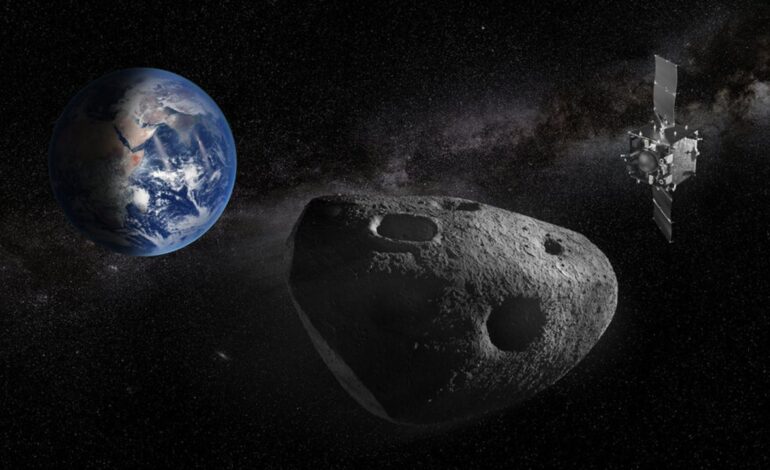New Research Unlocks Asteroid Spin Dynamics to Prevent Earth Impacts

Groundbreaking research presented at the Europlanet Science Congress in Helsinki has shed light on how asteroids spin in space and how this knowledge could be critical for planetary defense. Two separate studies focused on the mechanics of asteroid rotation and the identification of safe deflection zones, offering insights that could help prevent catastrophic impacts on Earth.
In the first study, researchers led by Wen-Han Zhou from the University of Tokyo utilized data from the European Space Agency’s retired Gaia mission. The team investigated how an asteroid’s spin is influenced by collisions with other space objects. Their findings suggest that the rotation patterns of asteroids can be understood through a balance of two opposing forces: impacts that cause erratic motion and internal friction that stabilizes rotation.
Zhou explained, “By leveraging Gaia’s unique dataset, advanced modelling and AI tools, we’ve revealed the hidden physics shaping asteroid rotation.” The researchers discovered that a clear distinction exists between fast-spinning asteroids and those that tumble chaotically. They found that slower rotators are more susceptible to disturbances from impacts, while faster ones tend to maintain their stability. Additionally, the effect of sunlight on rotation was highlighted, as heat-induced radiation can subtly alter an asteroid’s spin.
The research also indicates that many asteroids are not solid rock but rather “rubble piles,” consisting of loosely bound clusters of rocks and dust. This distinction is vital for planetary defense, as the response of a fragile asteroid to an impact would differ significantly from that of a denser body.
Identifying Safe Impact Zones for Deflection Missions
The second study, led by Rahil Makadia from the University of Illinois at Urbana-Champaign, focused on determining the safest areas to strike an asteroid during a deflection mission. The researchers found that not all impact sites are equally effective. Striking the wrong location could inadvertently redirect an asteroid back toward Earth due to what scientists term a “gravitational keyhole.”
Makadia noted, “Even if we intentionally push an asteroid away from Earth with a space mission, we must ensure it doesn’t drift into one of these keyholes afterwards.” To mitigate this risk, the team developed probability maps that indicate optimal strike zones on an asteroid’s surface. They conducted simulations of kinetic-impact missions, using data from NASA’s DART mission, which successfully impacted the asteroid Dimorphos in September 2022.
By simulating various impact conditions, including speed and angle, the researchers identified safe zones where a spacecraft could nudge an asteroid’s orbit without increasing the risk of a future collision with Earth. Their models applied to the near-Earth asteroid Bennu, which has been extensively studied by NASA’s OSIRIS-REx mission. This mission provided precise data on Bennu’s surface and orbital characteristics, allowing for thorough risk assessments regarding potential future impacts.
The analysis revealed potential gravitational keyholes in Bennu’s trajectory, but the new data significantly reduced uncertainties surrounding these threats. Makadia’s team produced detailed impact-probability maps that highlight areas on Bennu where an impact would be safest, thereby aiding future planetary defense efforts.
Future Implications for Planetary Defense
As new telescopes and missions emerge, including the upcoming Vera C. Rubin Observatory, scientists will be able to expand this research to larger samples of asteroids. Zhou stated, “With upcoming observatories, we’ll be able to apply this method to millions more asteroids, refining our understanding of their evolution and make-up.”
This research represents a significant step forward in planetary defense strategies, offering a blueprint for safe deflection missions that could protect Earth from potentially hazardous asteroids. By combining knowledge of asteroid spin dynamics with effective impact strategies, researchers are paving the way for better preparedness against cosmic threats.






